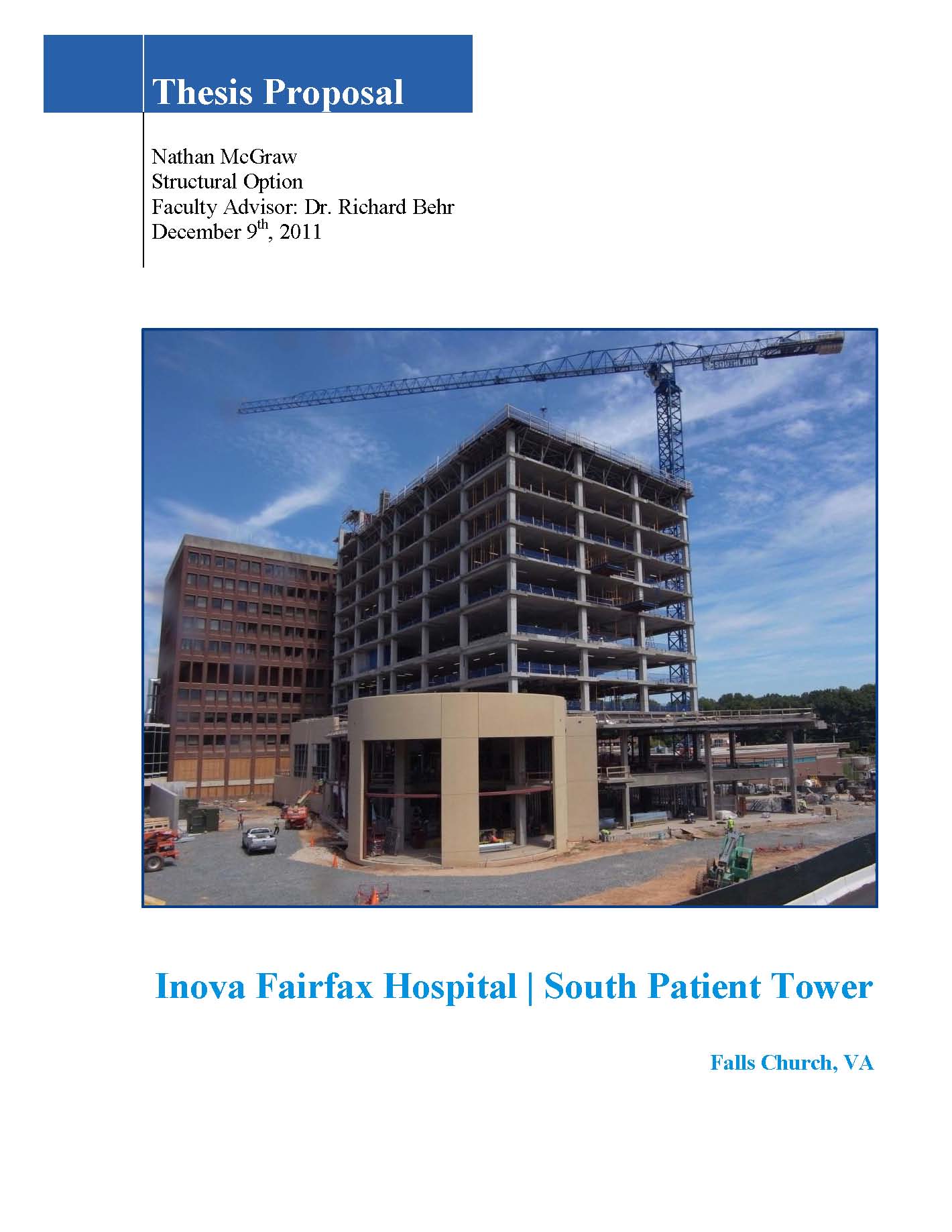

Original Proposal Revised Proposal Revised Proposal
(12/15/2011) (1/12/2012) (1/27/2012)
for Review
04.28.12 Thesis Reflection Posted
04.28.12 Thesis Research Posted
04.28.12 Final Presentation Slides
Posted
04.04.12 Final Report Posted
03.25.12 Presentation Outline Posted
03.25.12 Sample Slides Posted
01.27.12 Revised Thesis
Proposal Posted
01.26.12 Question Posted to
Discussion Board
01.16.12 Building Statistics Part
II Posted
01.12.12 Proposal Revision Posted
12.15.11 Thesis Proposal Posted
11.18.11 Technical Report 3 Posted
10.24.11 Thesis Abstract Posted
10.19.11 Technical Report 2 Posted
09.23.11 Technical Report 1 Posted
09.12.11 Building Statistics Part I Posted
09.08.11 Owner Permission
Form Received
09.08.11 Student Biography Posted
08.26.11 Building Statistics Draft
1/27/2012: Modification of breadth topics and updated schedule
1/12/2012: Modifications of the breadths, updated schedule and minor text changes per
faculty comments

The ultimate goal of the Fall Semester was to identify a problem and then address this problem
with a redesign for the Spring Semester. The proposal can be seen by clicking HERE or the
thumbnail above.
Depth - Fixed Base vs. Base Isolation
The existing lateral system found in the South Patient Tower will be redesigned using a one-way floor slab system that was investigated in Technical Report 2. The one-way slab will increase the lateral stiffness of the structure in the East-West direction and help correct the torsional irregularity problem. Although this system was deemed not to be a viable option in Technical Report 2, the architectural changes will be investigated in an Architectural Breadth. Upon completion of a suitable lateral system, the building will be moved to Berkeley, California. Next, new seismic loads will be calculated to determine the controlling load combination. Two separate structures will then be created using ETABS to compare the effectiveness of these structures for higher seismic loads and the S-1 performance requirements:
- One-way slab system with a traditional fixed base
- One-way slab system utilizing base isolators
Breadth 1 - Architectural/Facade
Using a different lateral system will have a direct impact on the facade of the South Patient Tower. The current facade consists of precast concrete panels with a glass curtain wall system. Because of the addition of the beams from the moment frames, the beams may obstruct the existing placement of the vision panels and ultimately impact the window location and size. Also, because of the large percentage of glass for the enclosure system, changing the properties of the glazing system could lead to significant alterations to the heating/cooling loads for the main hospital. Therefore, an alternate glazing system with higher thermal performance characteristics will be investigated in this Architectural/Facade Breadth.
In addition to determining the effects of the new floor/lateral system on the facade system, the thermal performance of each glazing system will be analyzed. A heat transfer analysis model will be created using Trace to determine the adequacy of each wall assembly and any problematic
areas for weatherproofing. The thermal properties of the existing system and the proposed system will need to be obtained in order to create an accurate Trace/HAM Toolbox model. The basis for the comparison between the two systems will be the extra costs of the alternate system in terms
of materials and installation versus the life cycle costs of both the existing and proposed glazing systems.
Breadth 2 - Construction Management
The main purpose of the Construction Management breadth is to develop a cost and schedule
for the two structures located in Berkeley, CA. The key comparisons will be whether the one-
way
slab system with fixed base is more economical than the structure utilizing base isolators,
and the costs associated with the seismic resistant curtain wall system. Of particular interest is
the comparison of the traditional one-way slab floor system and the same system using base isolation. The use of base isolators will allow for a reduction in member sizes while still
maintaining an equal performance level compared with the traditional system.
The schedule analysis will be performed to determine the time necessary to incorporate the base isolation system as well as the alternate facade/curtain wall system. Schedules will be developed comparing the two different structures as well as the two facade systems.
MAE Coursework
As a requirement for completing the MAE degree, graduate level coursework must be
incorporated into the proposal. Computer modeling will be an integral tool utilized in the
completion of the redesign as well as the modeling of the base isolators. Concepts such as insertion points, rigid diaphragm constraints and modal analysis results will be used for the redesign of the South Patient Tower and were taught in AE 597A - Advanced Computer
Modeling.
AE 538 - Earthquake Resistant Design will also be heavily relied on for this proposal. The design of concrete structures for seismic locations was first taught in this class, and an introduction to base isolation techniques and theories were discussed and will be applied to the proposal and redesign.
A B E 513 - Applied Finite Element, Finite Difference and Boundary Element Analysis will be relied upon when modeling the base isolation system. Material from this course will assist in the development of the non-linear model to depict the base isolation system as accurately as possible.
Coursework from AE 532 - Building Enclosure Science and Design will be integrated
into the design. Information from this course will be used mainly for the architectural/facade breadth and the determination and design of the alternate facade system which includes
the curtain wall system designed specifically for seismic activity.
accurate and complete information on the pages of
CPEP, please be aware that the information contained
herewith is considered a work in progess for this thesis
project. Modifications and changes related to the
original building design and construction methodo-
logies for this senior thesis project are solely the
intrepretation of Nathan McGraw. Changes and
discrepancies in now way imply the the original
design contained errors or was flawed. Differing
assumptions, code references, requirements, and
methodologies have been incorporated into this thesis
project; therefore, investigation results may vary from
the orginal design.
This page was last updated on on 4/28/2012 by Nathan McGraw and is hosted by the AE Deparment © 2012

_Page_01.jpg)
_Page_01.jpg)